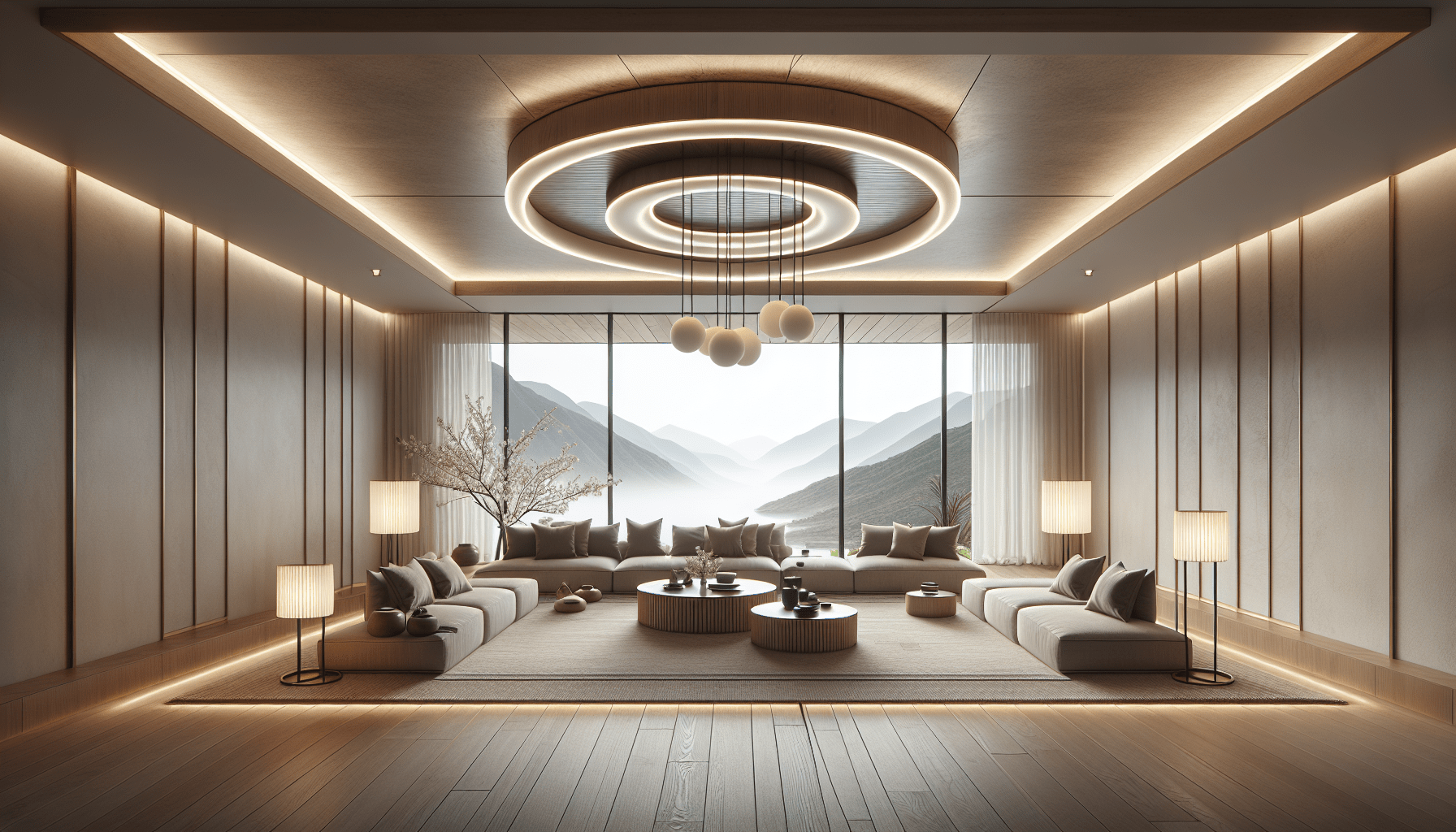Have you ever wondered how lighting can transform a space into a harmonious blend of styles?
Understanding Japandi Design
Japandi design marries the minimalist elegance of Japanese aesthetics with the warmth of Scandinavian design. This unique approach emphasizes functionality and simplicity, creating serene environments that promote relaxation and well-being. In this context, lighting plays a crucial role, perhaps more than you might initially think.
The Essence of Minimalism
In Japandi design, less is truly more. Every element in your space should serve a purpose while contributing to the overall aesthetic. As you consider lighting options, recessed lights emerge as a prominent choice due to their sleek and unobtrusive design.
Creating Balance with Nature
Both Japanese and Scandinavian cultures place a strong emphasis on nature. Japandi design often incorporates natural materials and organic shapes. Recessed lighting can enhance these elements by illuminating them subtly, without overshadowing their beauty.
The Functionality of Recessed Lighting
Recessed lights, often installed in ceilings, offer a clean look that maintains the spaciousness of a room. Their design allows for versatile applications in various spaces within your home.
Versatile Applications
-
Living Areas: Using recessed lights in your living room can create a cozy atmosphere. You can place them strategically to highlight key features, such as a piece of art or an accent wall.
-
Kitchens: In the kitchen, recessed lighting can provide essential task lighting above counters while maintaining the minimalist vibe that defines Japandi design.
-
Bathrooms: Soft recessed lights can enhance the tranquility of a bathroom, making it a retreat. Consider installing them around mirrors for functional yet sleek lighting options.
-
Hallways: Recessed lights can keep hallways illuminated without cluttering the space with fixtures, allowing for a seamless flow from one room to another.
Energy Efficiency
Another significant advantage of recessed lights is their energy efficiency. Many modern recessed lighting options use LED technology, which consumes less energy and lasts longer than traditional bulbs. This not only aligns with the sustainable practices favored in Japandi design but also saves you money in the long run.
Minimal Visual Clutter
Recessed lights blend seamlessly into the ceiling, ensuring that the clean lines of Japandi design are preserved. By eliminating hanging fixtures, you reduce visual clutter, allowing the space to feel more expansive and serene.
Enhancing Aesthetic Appeal
While functionality is essential in Japandi design, aesthetic appeal is equally important. Recessed lights can contribute to the overall design narrative, emphasizing the beauty of the space.
Highlighting Textures and Materials
One of the hallmarks of Japandi design is the use of natural textures, whether it be wood, stone, or textiles. Recessed lights can accentuate these materials, creating depth and interest in your room.
Table: Textures Highlighted by Recessed Lighting
| Material | How Recessed Lights Enhance It |
|---|---|
| Wood | Creates warmth and highlights grain |
| Stone | Emphasizes natural patterns and colors |
| Fabrics | Adds softness and dimension to textiles |
Creating Mood and Ambiance
The ability to control the brightness of recessed lights enables you to set the mood in your space. Dimming options can help create a relaxed environment that aligns with the calming essence of Japandi design.
Choosing Color Temperature
The color temperature of the light you choose is critical. Japandi design often favors warm tones to promote a cozy and inviting atmosphere. Recessed lights are available in various color temperatures, ranging from warm white (2700K) to cool daylight (5000K). Opt for warmer tones to best complement your design ethos.
Layering Light in Your Space
In Japandi design, layered lighting is vital for achieving the desired ambiance. Recessed lights can be one component of your overall lighting scheme, working seamlessly alongside other light sources.
Combining with Other Lighting
-
Task Lighting: In spaces like the kitchen or home office, combining recessed lights with under-cabinet or desk lighting ensures functionality without sacrificing style.
-
Ambient Lighting: While recessed lights provide a clean look, consider adding sconces or floor lamps featuring natural materials to enhance the warmth of your space.
-
Accent Lighting: Use recessed lights to highlight architectural details or design elements as focal points. This creates visual interest and depth throughout the area.
Establishing a Lighting Plan
When incorporating recessed lights into your Japandi design, it’s beneficial to establish a comprehensive lighting plan. Think about the layers of light you wish to create and how each element will work together.
Table: Creating a Lighting Plan
| Lighting Type | Purpose | Example Placement |
|---|---|---|
| Recessed | General/Task Lighting | Ceiling above workspace/kitchen |
| Sconces | Ambient Lighting | Walls next to seating areas |
| Floor Lamps | Accent Lighting | Corners or near reading areas |
Installation Considerations
Before you start purchasing recessed lights, think about the installation process. Proper installation is key to ensuring your lights function effectively and look great.
Placement Strategies
The placement of recessed lights impacts the overall effect they will have in your space.
-
Spacing: Generally, recessed lights should be spaced about 4 to 6 feet apart for even illumination.
-
Height: Consider the ceiling height when determining the placement. Higher ceilings may require more distances between lights to maintain an even distribution of light.
-
Focal Points: Direct light onto areas you want to highlight, such as art or architectural features, to create compelling visual interest in your home.
Professional Installation vs. DIY
Installing recessed lighting can be a DIY project for those comfortable with electrical work. However, if you’re uncertain about your skills or local building codes, hiring a professional electrician can ensure safety and optimal results.
Maintenance of Recessed Lights
After installation, the longevity and performance of your recessed lights depend on proper maintenance and care.
Regular Cleaning
Dust and debris can accumulate around recessed lights, affecting their brightness. Regularly clean the fixtures to ensure they perform optimally. Here’s how:
- Use a damp cloth to wipe around the light trim.
- Ensure bulbs are replaced following the manufacturer’s recommendations.
Check for Malfunctions
Occasionally inspect your recessed lights for any signs of flickering or failing bulbs. Prompt attention to these issues can prevent more significant electrical problems later.
Eco-Friendliness in Japandi Design
The ecological footprint of your home is a consideration in Japandi design. Recessed lights can significantly contribute to a sustainable living environment.
Eco-Friendly Options
Many recessed lighting fixtures available today are designed with sustainability in mind. Look for LED options with low energy consumption and high-efficiency ratings to align with eco-friendly principles.
Utilizing Natural Light
In addition to artificial lighting, maximizing natural light during the day can minimize the need for electricity. Consider configuring recessed lights alongside windows and skylights to enhance the natural feel of your space.
Conclusion: Embracing Balance and Harmony
Recessed lights can undoubtedly play a transformative role in Japandi design. Their ability to provide functional and aesthetically pleasing lighting while maintaining the minimalist essence of the style makes them ideal for your space. As you thoughtfully select and install recessed lighting, remember to consider placement, layering, and maintenance to create a harmonious and inviting environment that reflects the tranquil beauty of Japandi design.
So, as you design your home, you can confidently incorporate recessed lights knowing they will enhance both the aesthetic and functionality, bringing balance and serenity to your living spaces.

